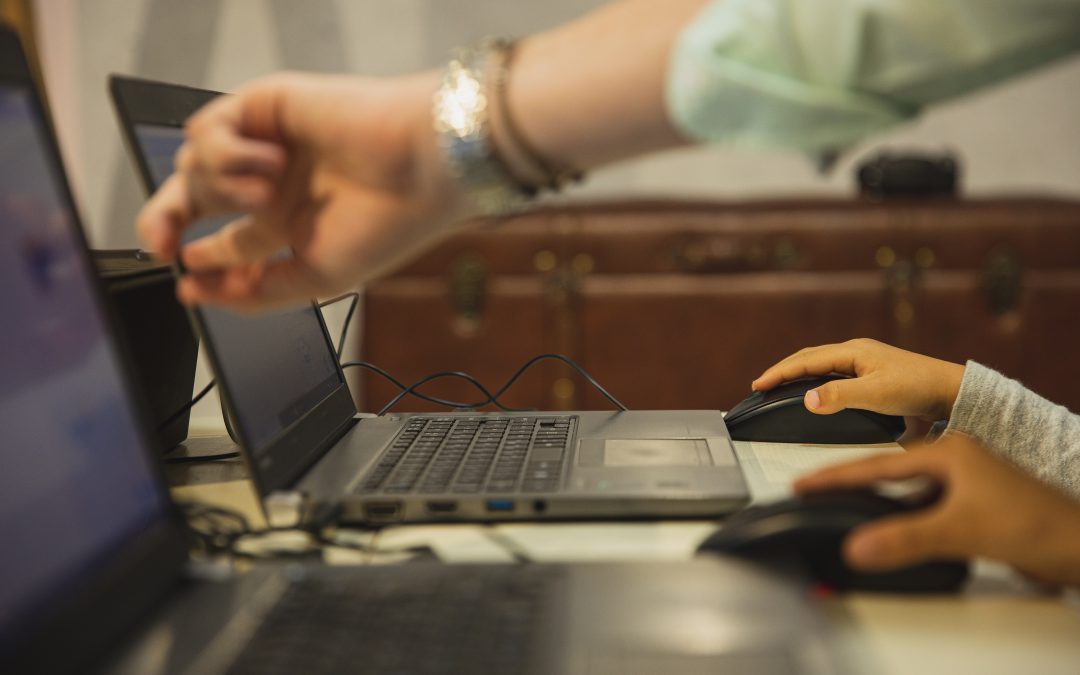Technology is central in today’s classroom. In a special report, Education Week states that “[I]t might not be a tectonic shift yet, but the changes taking place in the K-12 tech landscape as a result of the coronavirus school closures are real and meaningful.” The majority of teachers surveyed by Education Week believe that “greater access to 1-to-1 computing will make high-quality teaching easier.” With online communication now ubiquitous, it’s easy for students to forget that everything they do online is recorded. This is known as our digital footprint. To keep students safe, it’s essential that schools focus on teaching students to understand their digital footprint.
What Is a Digital Footprint?
A digital footprint is basically anything that a student writes, posts or comments online. This can be through email, social media or posts that have been written by you or about you. A digital footprint itself is not a bad thing. In fact, every internet user has some form of digital footprint. This is especially true now that social media is a common form of communication — perhaps the most common. However, students need to be aware of their digital footprint and how they can control it.
What Are the Dangers of a Digital Footprint?
Teach students to be careful of the sites that they visit. There’s always the risk of spam or viruses. Also, sites with low security can leak personal information, including everything from passwords to credit card numbers. In order to avoid low-security sites, students should make sure they’re using sites that start with HTTPS. This acronym stands for Hypertext Transfer Protocol Secure. Security on social media is also important. It may seem harmless to post about pets or childhood best friends, but these are some of the most common bank security questions.
Teaching Students to Understand Their Digital Footprint
Just about anyone can find your digital trail. A good way to show students their digital footprint is to ask them to google their own names. Often, a quick Google search will bring up images of the student and their social media handles, even if their accounts are private. Students should also understand that companies use cookies to know what kind of ads would interest them. Cookies are small files that store small pieces of information and are saved onto a user’s computer. Some cookies allow your computer to remember a username or password for a particular site. However, cookies can also track a user’s interests to help third parties generate relevant ads. Every time a student allows a site to track cookies, they’re adding to their digital footprint. It’s important to teach students how to view and disable cookies.
How Can Students Manage Their Digital Footprint?
Students can protect their personal information by keeping social media accounts private. With private accounts, students can share information only with people they know and trust. If an account is public, anyone can find it. This includes future employers, who students may not want to see some of the more casual things shared with friends. However, it’s important for students to realize that even if they restrict their accounts to close friends and family, dangers remain. Anyone can screenshot a post and share it with a larger audience. Therefore, if students post something, it can be difficult to get rid of it, even if they delete the post.
Screen Monitoring Software Teaches Students to Understand Their Digital Footprint
Understanding one’s digital footprint involves self-awareness regarding one’s online behavior. Technology does present dangers. However, it’s also a way to teach students how to avoid dangers. If schools let students know that screen monitoring software is installed on school computers, students will learn to be more cautious about their online behavior. The presence of screen monitoring software leads students to think about what they’re doing online. This helps students develop metacognition, an important skill for their present and their future. Also, all students make mistakes. Screen monitoring software such as LearnSafe works hand-in-hand with content filters to protect learners from harm.


